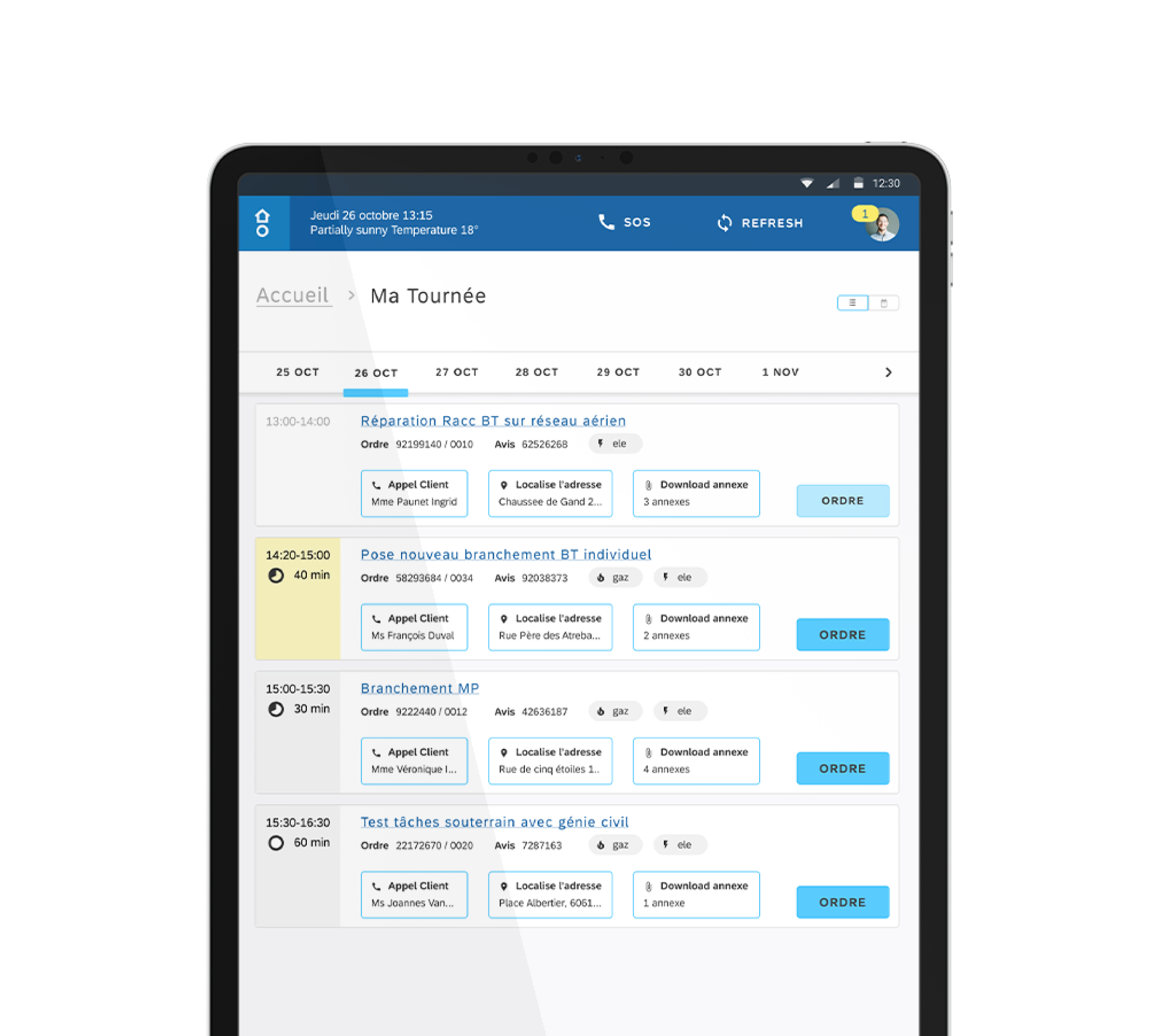ORES
Introducing design thinking for the “Mobility” Programme

We introduced a user-centred design approach to co-design an ideal mobile portal intended to increase efficiency in the field for Ores workers. We also contributed to reframing the overall vision for the existing “Mobility” programme using user-centred design principles.
| Client | Sector | LAnguage | Team |
|---|---|---|---|
| Ores | Energy | French | 4 designers |
Towards a user-centric approach
Ores manages gas and electricity networks in the Wallonia region of Belgium. They introduced the “Mobility” programme which is aimed at empowering employees in the field by providing a tailored mobile portal that allows them to perform their daily tasks in an efficient and effective way. Ores looked to reframe the programme in a more user-centred way by embedding the needs from the field to guide the digital transition. We supported Ores by designing the proof of concept of the ideal mobile portal and involving the project team from different departments to co-create a shared vision for the Mobility program.
An ideal portal
Since design thinking was a new methodology for Ores, we introduced it to the company in the form of a proof of concept (POC) for the mobile application redesign. The POC was intended as an ideal application with limited scope. The application allows Ores to test the added value of a user experience (UX) design approach, as well as its relationship with existing programs and technological constraints that are dictated by existing off-the-shelf tools.
In close collaboration with the project team – including stakeholders from different departments, such as Transformation, IT, Business – we mapped a specific user journey which then served as the basis to analyse the POC.
To get a better understanding of users’ needs, we delved deep into user research. We conducted several interviews and observation sessions with specific profiles of field technicians in the Charleroi and Namur regions, and used the key insights from the study to set the basis for the conceptual design of the ideal mobile application. We co-designed the concept of the application in multiple collaborative sessions, together with the project team and field technicians.

Collectively, we decided that the ideal portal should give users greater independence and flexibility in the follow-up of their work orders by optimising processes such as planning, timesheets and ordering materials. The wireframes of the application concept were then turned into a mock-up, which the end-users tested remotely.

User requirements vs. technology
The development phase consisted in confronting the “ideal future” with the technological constraints. Ores wanted to confront the compatibility of the POC with existing off-the-shelf tools, to assess if it would fulfil the functional and usability requirements introduced in the POC. In this phase we assisted the developers in ensuring that the functional requirements would be in place. At the same time, we introduced the notion of design systems by shaping and documenting the user interface of the ideal application, based on Ores’ brand identity.

To shape a clearer vision for the Mobility programme, we facilitated a series of collaborative sessions with the extended project team. The sessions resulted in a set of guiding principles illustrated by key future scenarios to make the programme’s objectives explicit and understandable by several stakeholders in the company.
Towards greater user centricity
To evaluate a possible future adoption of the design thinking methodology, we performed an assessment of the process with the extended project team. This resulted in a common acknowledgement of the value of design thinking and, specifically, UX design, along with an acknowledgement of its possible conflicts with other established processes. Still, the project expressed a shared wish to turn design thinking and, specifically, UX design, into a standard approach in the organization.